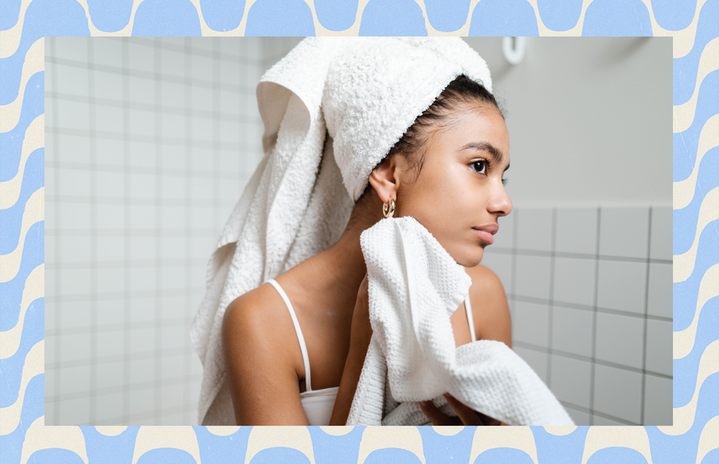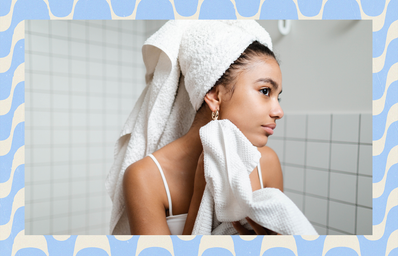Fall is finally here. The weather’s getting colder, the air’s getting drier, and the semester’s getting more stressful. While the transition into winter is always a more-than-welcome break from the heat and Charleston’s killer humidity, it also has a tendency to wreak havoc on skin; along with the hurricanes and orange leaves have come breakouts, dry patches, and redness. Whether you’re looking for a solution to these issues or are just bored with your usual skin care routine, look no further.
WHere did skin cycling come from?
Skin cycling was created by Dr. Whitney Bowe, an award-winning, board-certified dermatologist from New York. She developed the technique back in 2021 while working with patients at her private dermatology practice and it quickly gained popularity on TikTok. The routine is simple and effective, with many people taking to social media with success stories, claiming that skin cycling helped them clear their acne, even out their skin texture, and get rid of any redness and irritation, among other things.
So what is skin cycling?
Skin-cycling is a streamlined evening skincare routine that’s simple, quick, and inexpensive. You aren’t required to buy any new, expensive products (although you may need to buy a product or two, they won’t break the bank), and you don’t have to follow any long, complicated routine. The simplicity of skin cycling tackles common skincare mistakes like using too many products, too high concentrations of products, and ingredients that don’t work well together on the skin while effectively building and maintaining your skin barrier.
THe basics
Skin cycling is a night-time routine, so you should continue with your usual morning skincare. Skin cycling follows a 4 night cycle:
- Night #1 – Exfoliant Night
- Night #2 – Retinol Night
- Nights #3 & 4 – Moisturize and Recover
Start every evening by washing your face with your usual cleanser. Apply the appropriate product and follow with a good hydrating cream or moisturizer.
Night #1 – exfoliant night
What does exfoliation do for your skin?
Exfoliation clears all the dead skin cells, bacteria, dirt, oil, and makeup out of your pores and stimulates healthy skin cell development and collagen production. This clears and prevents breakouts and makes your skin look brighter and softer over time. It also allows your skin to better soak up whatever serums and creams you apply afterwards and preps your skin for night #2.
Tips & Notes:
Many dermatologists recommend using chemical exfoliants over gritty exfoliating scrubs that can damage the skin and cause microdermabrasions (looking at you, St. Ives Apricot Scrub). Chemical exfoliants are acids that work to increase cell division and turnover more gently and effectively than physical exfoliants.
You only need to use an exfoliant 2-3 times a week. If you’re following the skin cycling routine, you’ll only use it twice a week anyway, but if you experience any irritation, you may need to stop using it everyday, or start using either a lower concentration product or less of the product.
Your skin may tingle a bit for a minute or two after application, but it shouldn’t be painful. If it feels like the exfoliant is burning your skin, wash it off.
Different Types of Exfoliants:
There are two main types of chemical exfoliants: AHAs and BHAs. Both types are beneficial for any type of skin, but AHAs tend to be more useful for dry skin and BHAs tend to be more useful for oily skin. The benefits of each acid are fairly similar, so you don’t have to worry too much about the exact product you choose, but one might be more beneficial than others depending on your skin’s needs.
Here are some common kinds of chemical exfoliants and their benefits:
Glycolic Acid (AHA):
Glycolic acid is made up of small molecules that easily penetrate the skin and make your skin glow. Glycolic acid is the most beneficial AHA for oily skin but is also the harshest on your skin, so it may not be the best option if you have sensitive skin.
Lactic Acid (AHA):
Lactic acid helps to improve the overall texture and tone of your skin and reduces the appearance of large pores and hyperpigmentation.
Mandelic Acid (AHA):
Mandelic acid is a little gentler than other exfoliating acids and is a good option if your skin is more sensitive.
Salicylic Acid (BHA):
Salycylic is the most common and the strongest BHA, but is still gentler on your skin than glycolic acid and is a good option for acne-prone skin.
NIGHT #2 – Retinol NIGHT
WHAT DOES retinol DO FOR YOUR SKIN?
Retinol works to smooth skin texture and regulates oily skin while preventing breakouts. It also evens out your complexion over time and helps to prevent wrinkles, fine lines, and other signs of aging.
TIPS & NOTES:
Dr. Bowe recommends putting a little bit of moisturizing cream or lotion under and around the corner of your eyes and around the corners of your mouth before applying any retinol to help prevent irritation and dryness in sensitive spots.
After applying retinol, give your skin about 10 minutes to absorb it before applying anything else. You want your skin to be dry before you put on any other serums or moisturizers.
Nights #3 & 4 – Moisturize and Recover
On the last two nights of the cycle, focus on moisture and hydration. Products like exfoliants and retinol can be irritating to your skin, so it’s important to give it a chance to breathe and balance itself between applications. Use just a moisturizer or cream to rest, repair, and nourish your skin barrier and microbiome.
Does skin cycling actually work?
Many people have taken to TikTok and other social media to show off the positive results of skin cycling. Dr. Bowe says that it should take about 2 weeks to start to see results, but it can take anywhere from 2 to 8 weeks for your skin to adjust to a new routine. Your skin may look like it’s getting worse for the first couple weeks, but don’t get discouraged. When you start a new routine or use new products, your skin goes through a normal, short-term purge of any underlying oil, dirt, or bacteria which may cause more breakouts and acne initially but will subside once your skin adjusts.
I’ve been using this routine for about a month now and have had great results. My skin is pretty oily and acne prone around my eyebrows and forehead but dry around my cheeks, mouths, and nose, so trying balance between clearing breakouts in certain places without over-drying my skin in other places isn’t always easy but skin cycling has been good for both so far. I do recommend avoiding the area around your eyes and mouth when applying the exfoliant and the retinol and applying extra moisturizer on the more dry and sensitive parts of your skin.
All of the products I’ve been using are from The Ordinary. You don’t have to use products from any particular brand, but I personally have been a fan of The Ordinary for a while because their products are simple, high-quality, have been really effective on my skin, and are significantly cheaper than many other products on the market.
Here’s what I’ve been using from The Ordinary:
Glycolic Acid 7% Toning Solution
240mL
$10.00
Retinol 1% in Squalane
30mL
$8.00
Natural Moisturizing Factors + HA
100mL
$10.50

